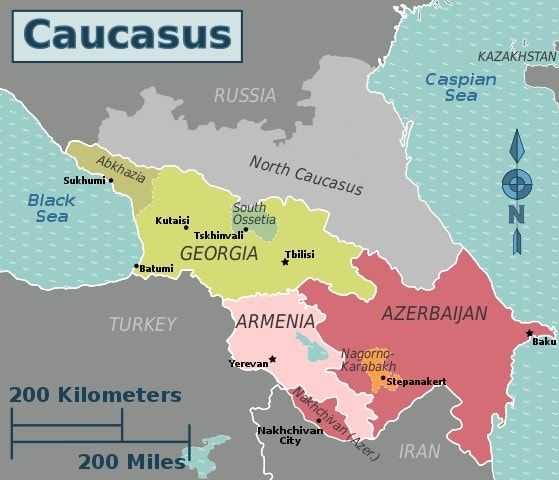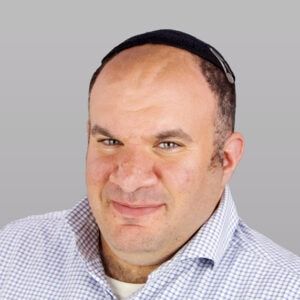Who are the Circassians? What is their community’s history in the Land of Israel and the unique role they play in the modern State of Israel?
In late December 2022, the United Nations World Tourism Organization named 32 villages around the world as “tourist villages,” highlighting locales that invite international tourism while also maintaining local traditions and customs.
One of the 32 villages named by the UN was Kfar Kama, a town in the Galilee region of Israel with a population of just over 3,000.
However, contrary to assumptions, Kfar Kama is not a Jewish town or an Arab town. It’s not even a Druze town. Kfar Kama is a Circassian town, one of only two in the entire Jewish state.
While much is written about Israel’s Jewish majority as well as its minority communities (such as the Muslim Arab community, the Christian Arab community and the Druze community), little is known about the Circassian community.
Join the fight for Israel’s fair coverage in the news
From the Caucasus to the Galilee: The Circassians in the Land of Israel
 Composed of 12 tribes, the Circassians are an ethnic group from the northwestern Caucasus, which is bordered by Russia, Turkey and Iran.
Composed of 12 tribes, the Circassians are an ethnic group from the northwestern Caucasus, which is bordered by Russia, Turkey and Iran.
The Circassians were originally pagans, later converted to Christianity and then converted to Sunni Islam around the 15th century. However, regardless of their religion, all Circassians follow a code of conduct known as “Xabze.”
Due to their geographic location, the Circassians were subject to various incursions over the centuries by warring armies. This led to the development of a disciplined warrior culture among the Circassians.
In the late 18th century, the Russian Empire sought to annex the Circassian homeland and move other populations into the area. This led to a violent struggle between the Russians and the Circassians that lasted for almost 100 years.
Near the end of this violent period, between 1860 and 1864, the Russians burned down hundreds of Circassian villages and massacred more than a million Circassians (over 90% of the Circassian population).
Related Reading: ‘Historic Palestine’ – A Misleading Anachronism
In the aftermath of the destruction of the Circassian community, the surviving Circassians were exiled from their homeland. Respected for their moral values and bravery, a large number of surviving Circassians were welcomed into the Ottoman Empire.
In the latter half of the 19th century, the Circassians established three communities in the Galilee region of northern Israel. Kfar Kama was established in 1878, Rihaniya was established in 1880 and a third community was established near Hadera but was soon abandoned after a malaria outbreak.
The Ottomans allowed the Circassians to settle in the Galilee since the region suffered from lawlessness and anarchy, with bands of Bedouin and Druze controlling the area, and it was thought that the Circassians would be able to instill some order in the region. Ultimately, they were successful and paved the way for Jewish pioneers to establish Galilean communities soon after.
At the same time as the Circassians were establishing communities in the Land of Israel, they were also founding villages in the Golan Heights and modern-day Jordan. In fact, the modern city of Amman, the capital of Jordan, was established by Circassian refugees during the same period.
After the Six-Day War, the Circassians of the Golan Heights moved to Damascus and Aleppo although some moved back to their villages in the Quneitra area of the Golan Heights following Israel’s disengagement from that district in 1974.
In 1948, the Circassians chose to fight for the nascent Jewish state and since then have successfully integrated into Israeli society while still maintaining their traditions and customs.
Related Reading: How BBC Manipulated a Major Arab World Survey in Order to Slam Israel
The Circassians in the State of Israel
To date, there are approximately 4,000 to 5,000 Circassians living in the State of Israel, the vast majority of whom live in Kfar Kama and Rihaniya.
As a diaspora community looking forward to returning to its homeland, the Circassians speak their own language (Adyghe) at home, preserve their traditional wardrobe, music and dance, follow their traditional code of conduct, and generally marry only other Circassians (the community helps organize meet-ups between Circassians from Israel, Jordan, Turkey and Holland for the purpose of matchmaking).
The Circassians also observe May 21 as a day of mourning for those massacred by the Russians during the Russian-Circassian War.
While upholding their traditions and customs, the Circassians are also deeply integrated into Israeli society. As one Circassian from Kfar Kama told the Israeli news network, i24News, “We have three hats: Circassians, Muslims and Israelis.”
The Circassian and Druze communities are the only non-Jewish minorities to have their male population officially conscripted into the IDF.
Until 10th grade, Circassian children learn in local schools where they study Adyghe, Hebrew, Arabic and English. From 10th grade on, Circassian students attend regional Hebrew-speaking high schools, making them the “only Sunni Muslims in the world who study in Hebrew.”
In addition, within the younger generation of Circassians, 80% hold university degrees.
Related Reading: The Israeli Druze Community: A Covenant of Brotherhood
Another indication of the Circassians’ integration into Israeli society is their voting patterns.
Based on the voting results from Kfar Kama and Rihaniya during the November 2022 elections, the two top parties were Yair Lapid’s Yesh Atid (25%) and Benny Gantz’s National Unity party (22%). The two leading Arab parties (Hadash-Taal and Raam) collectively received 21% of the vote in the Circassian communities.
Even though the Circassian community makes up less than 1% of the Israeli population, it has left an indelible mark on Israeli society.
Following their mandatory service, some members of the Circassian community have gone on to professional careers as officers in the Israeli military. Others have made inroads into Israel’s burgeoning high-tech sector, work as researchers and scientists in the bio-med industry, or have found success in other fields.
In the field of sports, the captain of the Israeli national soccer team is Bibras Natcho, a Circassian from Kfar Kama.
Thus, as an ethnic and religious minority in the Jewish state, the Circassian community has been able to successfully maintain its traditions and customs while also integrating into modern Israeli society.
Liked this article? Follow HonestReporting on Twitter, Facebook, Instagram and TikTok to see even more posts and videos debunking news bias and smears, as well as other content explaining what’s really going on in Israel and the region.



